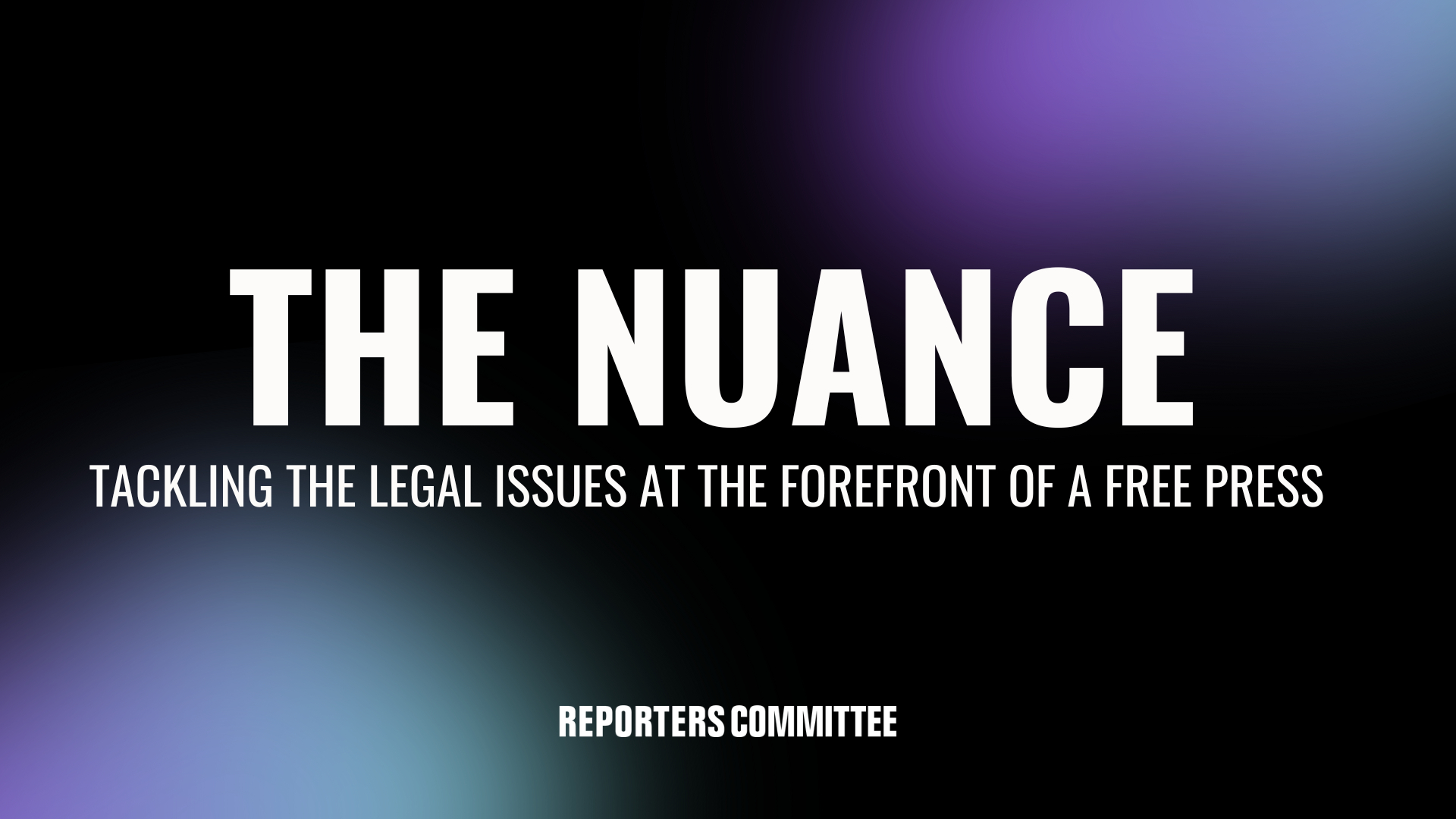ACLU seeks review in head-scratcher of an 8th Circuit right-to-observe case

The Reporters Committee plans to file a friend-of-the-court brief this week in support of the American Civil Liberties Union’s petition for U.S. Supreme Court review of a decision by the U.S. Court of Appeals for the Eighth Circuit that is a perplexer of major proportions.
At this point, it is pretty common knowledge that all of the odd-numbered circuits (and one even-numbered, the Tenth) have held that the First Amendment right to record police activity in public is clearly established. And no even-numbered circuit has said that the right doesn’t exist, they just haven’t found it to be clearly established (a prerequisite to getting to a trial when the right is violated). In the Eighth Circuit, however, the court has held in at least two cases — based on the right-to-record decisions in other circuits — that there is a clearly established right to observe police activity.
Enter Molina v. Book. The case arose out of protests in St. Louis in 2015 where two attorneys, Sarah Molina and Christina Vogel, were present. Each wore bright green hats identifying them as “National Lawyers Guild Legal Observers.” After the police began to use tear gas to enforce a dispersal order, Molina and Vogel retreated to Molina’s property several blocks away. Police then drove a “BEAR” armored vehicle by the property and shot tear gas canisters that landed at their feet. Molina and Vogel sued, alleging a violation of their right to observe police activity.
The court in Molina made several errors. Our brief urging the Supreme Court to grant review of the panel decision focuses more on the first: the Eighth Circuit’s finding that the right to passively observe law enforcement activity in public is not clearly established.
On that point, the court attempted to distinguish the two cases mentioned above — Chestnut v. Wallace and Walker v. City of Pine Bluff — in that both involved detentions or arrests of individuals for passive observation. In other words, the court held, those two cases involved Fourth Amendment violations, not First.
That, however, makes no sense. As the vigorous dissent notes, such a holding “underappreciates the interplay” between the two amendments. And the reason why an individual cannot be arrested or detained for passively observing police activity is because that activity, under the First Amendment, “could never be criminal.” In other words, the majority opinion effectively held that the officers in the BEAR would have clearly violated the Constitution if they took Molina and Vogel into custody, but using munitions against them was fair game.
While our brief mainly focuses on how courts consistently, and mistakenly, engage in this kind of hair-splitting in right-to-record cases, the Eighth Circuit made another error that is even more interesting. The court, as the ACLU writes in its petition for review, held that “written words . . . are not presumptively entitled to First Amendment protection when they are printed on clothing.” Because, the court said, not “everyone” would understand “National Lawyers Guild Legal Observer” to convey a “particularized message” — in this case a “pro-protest” message — the wearing of the hats was not “expressive conduct” and retaliation against the wearers not a clearly established First Amendment violation.
If you’re confused by that, you’re not alone. There’s a lot wrong with this approach, not least of which is that wearing clothing with words on it is just regular speech entitled to full First Amendment protection. It’s not “conduct” with an expressive element, like burning a draft card, which would trigger a different legal test.
And that error is also relevant for the press. The most obvious scenario would be the detention, arrest, or use of force against journalists who are clearly identifiable by “PRESS” labels on clothing or body armor. We have long argued that civil rights claims based on a First Amendment retaliation theory are an essential deterrent against that fact pattern. The Eighth Circuit is effectively saying that printed words identifying someone as a reporter are not speech at all under the First Amendment.
That’s a truly dangerous theory for press rights and, indeed, journalist safety. We’ll be watching this one closely.
Like what you’ve read? Sign up to get The Nuance newsletter delivered straight to your inbox!
The Technology and Press Freedom Project at the Reporters Committee for Freedom of the Press uses integrated advocacy — combining the law, policy analysis, and public education — to defend and promote press rights on issues at the intersection of technology and press freedom, such as reporter-source confidentiality protections, electronic surveillance law and policy, and content regulation online and in other media. TPFP is directed by Reporters Committee attorney Gabe Rottman. He works with RCFP Staff Attorney Grayson Clary and Technology and Press Freedom Project Fellow Emily Hockett.